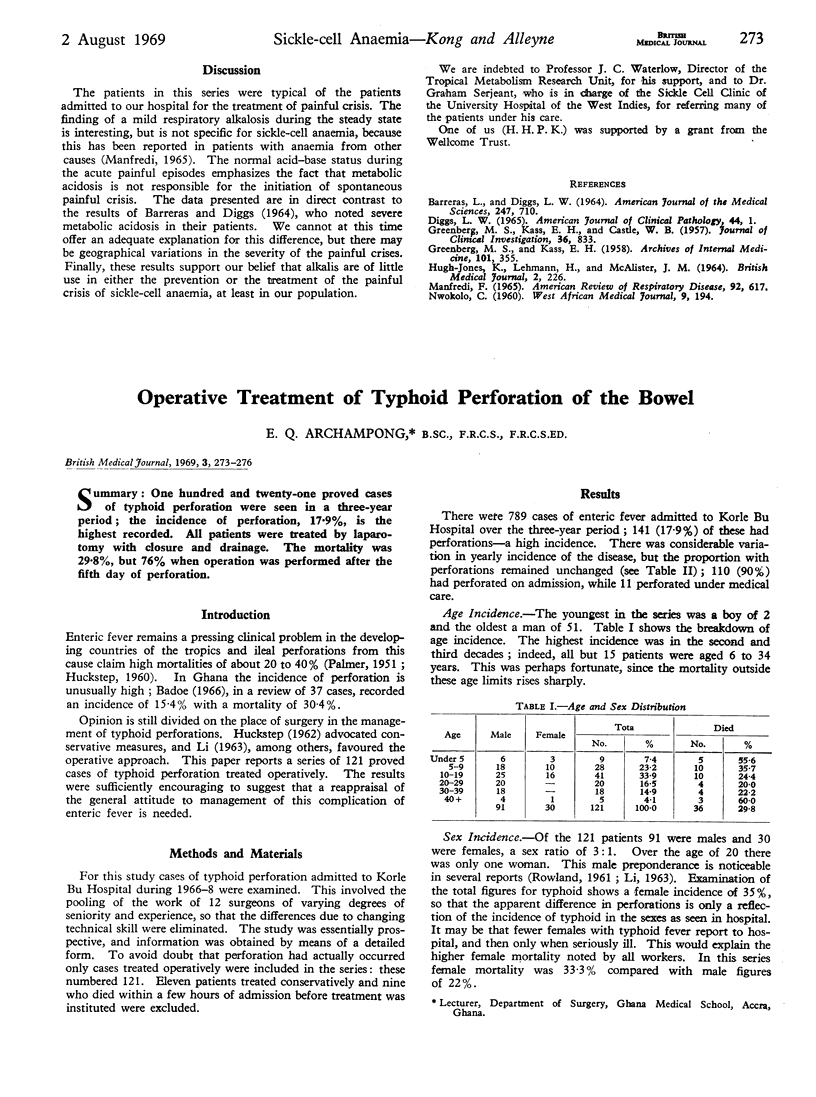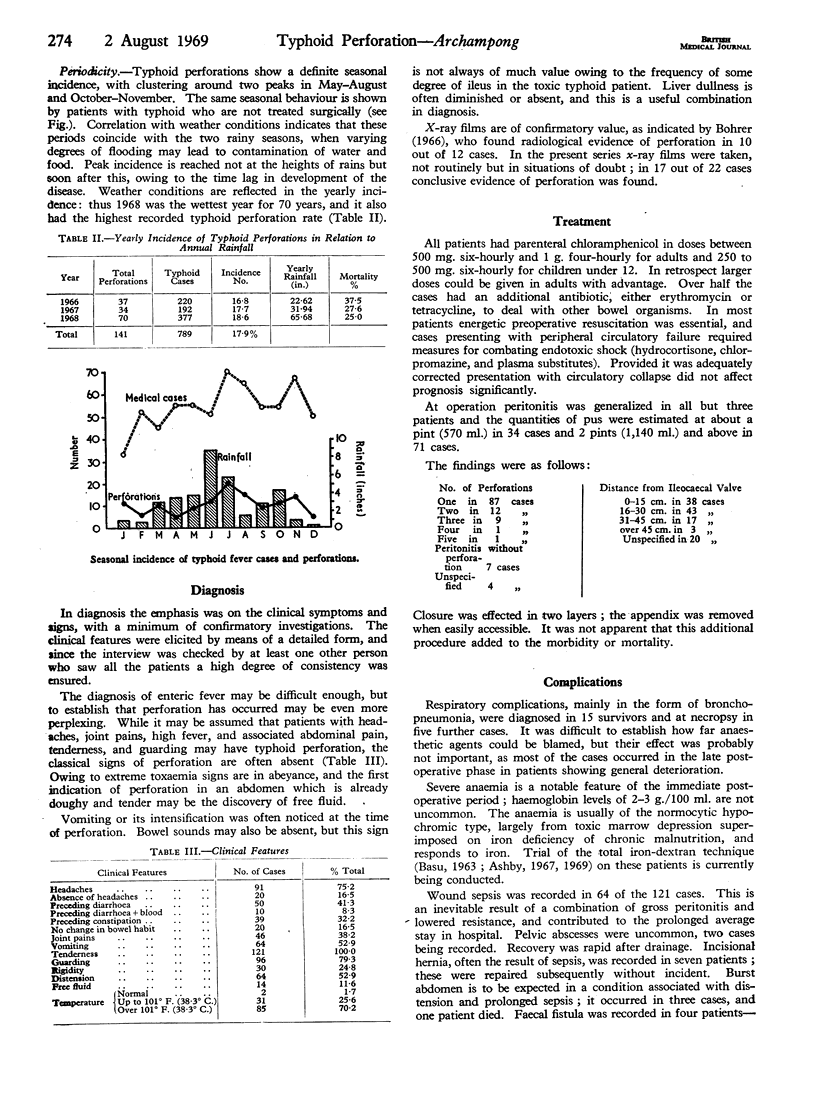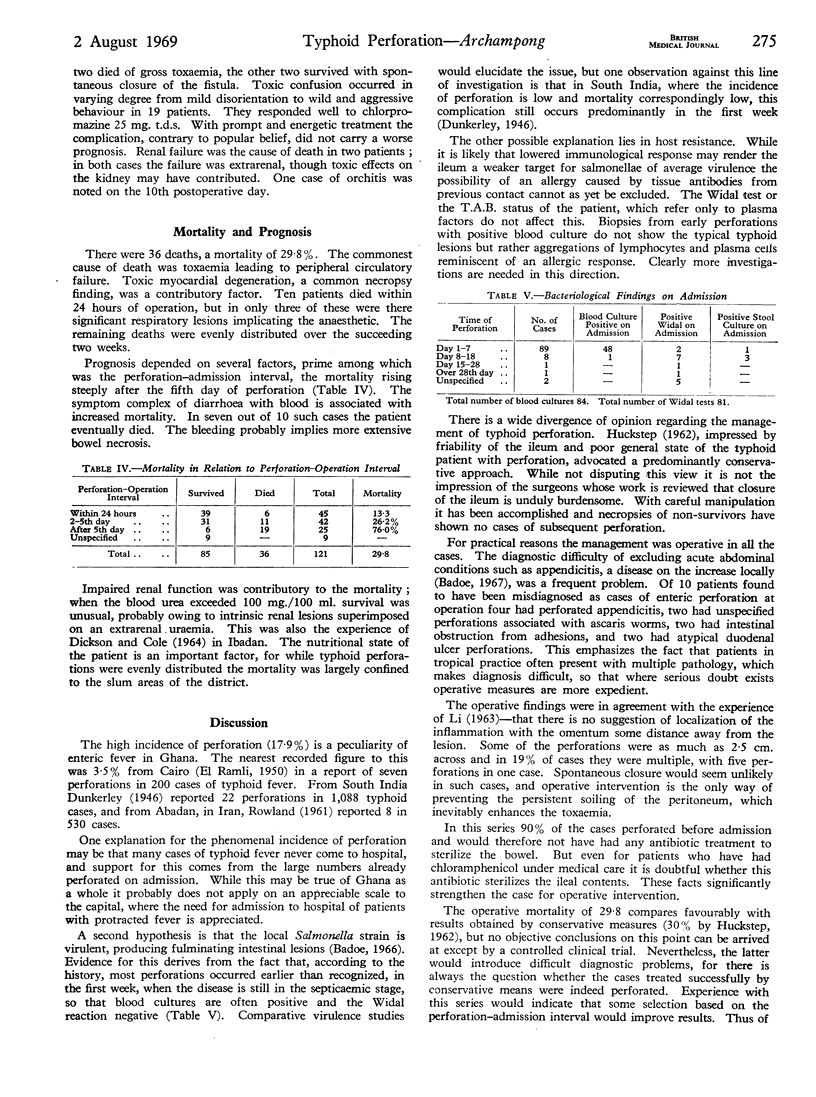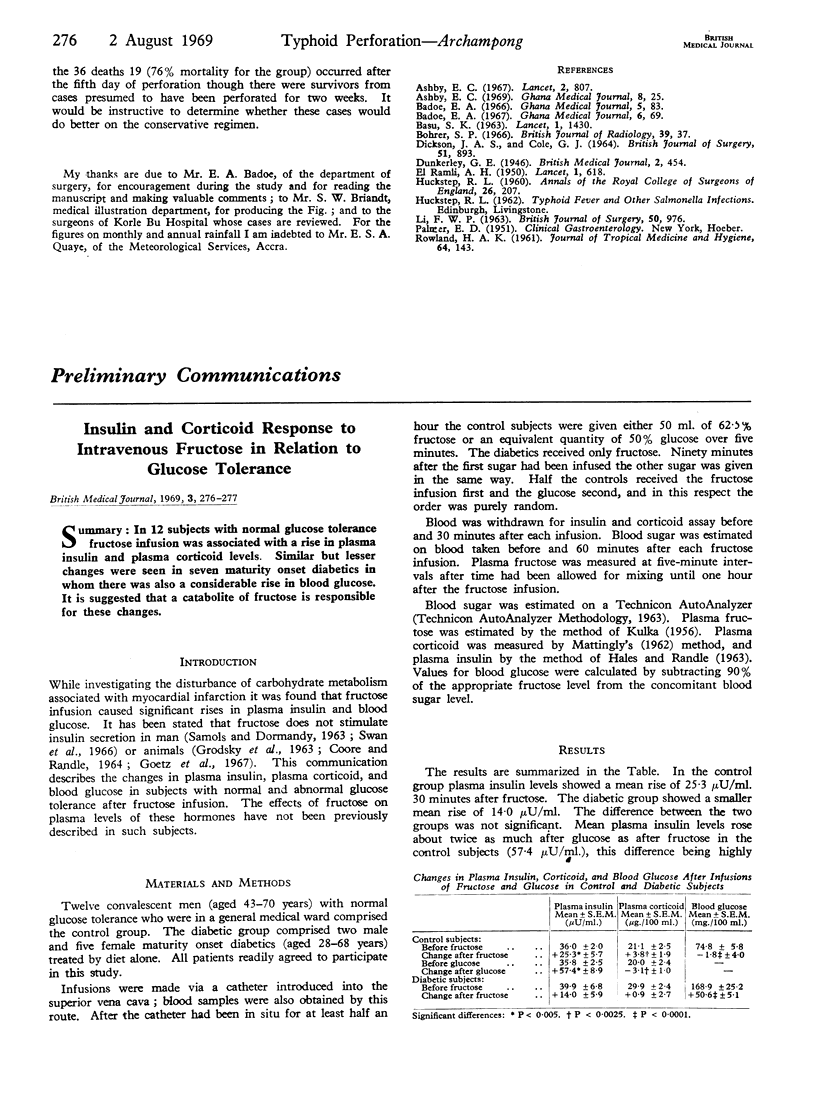Abstract
One hundred and twenty-one proved cases of typhoid perforation were seen in a three-year period; the incidence of perforation, 17·9%, is the highest recorded. All patients were treated by laparotomy with closure and drainage. The mortality was 29·8%, but 76% when operation was performed after the fifth day of perforation.
Full text
PDF



Selected References
These references are in PubMed. This may not be the complete list of references from this article.
- Ashby E. C. Total-dose iron-dextran infusions in general surgery. Lancet. 1967 Oct 14;2(7520):807–809. doi: 10.1016/s0140-6736(67)92238-6. [DOI] [PubMed] [Google Scholar]
- DICKSON J. A., COLE G. J. PERFORATION OF THE TERMINAL ILEUM. A REVIEW OF 38 CASES. Br J Surg. 1964 Dec;51:893–897. doi: 10.1002/bjs.1800511207. [DOI] [PubMed] [Google Scholar]
- Dunkerley G. E. Perforation of the Ileum in Enteric Fever. Br Med J. 1946 Sep 28;2(4473):454–457. [PMC free article] [PubMed] [Google Scholar]
- HUCKSTEP R. L. Recent advances in the surgery of typhoid fever. Ann R Coll Surg Engl. 1960 Apr;26:207–230. [PMC free article] [PubMed] [Google Scholar]
- ROWLAND H. A. The complications of typhoid fever. J Trop Med Hyg. 1961 Jun;64:143–152. [PubMed] [Google Scholar]


